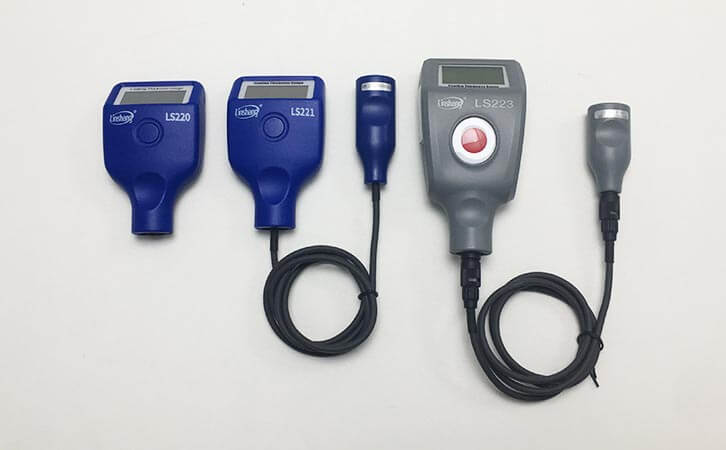Selection and Use of Paint Thickness Tester
Around our lives, whether it is high-rise buildings, passenger cars, airplanes, or daily necessities, they are all composed of a large number of composite materials. These composite materials are not only complex in composition, but also a more important point is the extensive use of paint film (coating) technology. "covering strengths and weaknesses" through different covering layers and giving full play to the advantages of various materials.
This kind of application is particularly obvious in the manufacturing industry and the chemical industry. For example, the commonly used steel pipes are not only hard but also electroplated on the surface. The silver light is beautiful. For another example, the paint on wooden boards and tiles during house decoration can not only avoid material loss, but also be beautiful and good-looking, waterproof and dustproof. In the field of optics, coatings are even more particular.
However, the extensive use of paint film technology has indeed beautified the appearance, prolonged the service life of the object. At the same time, it also brought new problems to the manufacturers and the inspection industry. How thick the membrane should be? How do I know how thick the film is? And all this is solved in front of the paint thickness tester.
The paint thickness tester mainly uses a high-precision probe to sense the coating layer of the measured object at different frequencies and wafer sizes. We can chooses different methods to measure according to different materials and accuracy requirements. With the correction and display function of the electronic chip, the coating thickness of the measured object is read. Therefore, the user must choose and use different paint thickness testers according to different needs and materials.
In actual measurement and use, the first thing that the surveyor needs to consider is whether to perform non-destructive measurement. Common non-destructive measurement methods on the market are:
Magnetic thickness measurement method: The measuring instrument measures coating thickness by generating a closed magnetic field on the measured material, and measuring the strength of the magnetic field induced by different materials and the change in magnetic resistance. This method is very suitable for measuring the thickness of non-magnetically permeable layers on magnetically permeable materials and has extremely high accuracy.
Eddy current thickness measurement method: The eddy current paint thickness tester measure the non-conductor layer on the metal conductor.
Ultrasonic thickness measurement method: Ultrasonic related technology is used to measure materials. The equipment is small in size and easy to hold, but it is unfortunately not suitable for metal materials.
Methods that cause material damage are usually extremely large equipment and expensive.Most of them are used for scientific research in material structure. For example, the electronic energy spectroscopy (AES) method uses "electronic drills" or "electron beams" to remove material on the surface of objects. Then uses large-scale equipment for structural and thickness analysis and processing.
After selecting a suitable paint thickness tester, the rest is simple. On the basis of keeping the material clean and flat, read the data records after the operation. Of course, in order to ensure the accuracy of the data, multiple locations should be selected for multiple measurements. The average or fitting number should be selected to minimize the error.
The paint film technology has changed life and life has given the paint film industry development. It is believed that in the future, the paint thickness tester will be used more widely and the paint film industry will become better and more diverse.
- High precision coating thickness gauge for used car
- Automotive paint protection films coating thickness gauge
- Plating Thickness Measuring Instrument for Detecting Anti-corrosion Coating
- Linshang LS220, LS191, LS160A– Necessary for Car Cover Inspection
- Coating Thickness Gauge for Second Hand Vehicle
- Zero Adjustment Step of Coating Thickness Gauge
